



![While independently investigating the detection and identification of ships ("I saw no reason why the program shouldn't include ship identification [as well as aircraft]," he recalled), Sherman had applied small amounts of modeling clay to a set of ship models that the Navy had provided to the university. This was done to cover up nonessential details and to heighten the key attributes by which one ship could be readily distinguished from another. Suddenly, Sherman was summoned to the office of the Vice-President of the university, where an enraged high-ranking naval officer accused him of putting mud on his models. To avoid continued damage to the ongoing relationship between the school and the Navy, Sherman resigned from the project.
About a year later, still working apart from the Navy, but by then associated with the Reserve Officers Training Corps, Sherman began an experimental university course in which thirteen male students, none of whom had drawn before (a key precondition of the project), were systematically taught to draw from projected slides, using a Rembrandt-like darkened room containing a tachistoscope (a device that enabled the slides to be shown for a fraction of a second), a set-up that Sherman described as a "flash laboratory." In a sequence of twenty-three class meetings, the students made drawings in total darkness from a series of prepared slides that were projected on a screen for only a split second.
At the beginning of each class period, the white lights in the classroom were turned off during a ten-minute period of dark adaptation, during which the students relaxed at their drawing boards, chatted, and listed to music under deep red light illumination, like the safe light in a photographic darkroom. (Similarly, as Sherman knew, World War II aircraft pilots wore glasses fitted with red filters, in order to remain dark-adapted and ready to fly at night at a moment's notice.)
After ten minutes, the red light was turned off, and the students then stood or sat at their drawing boards in the dark, charcoal in hand, with a supply of paper in front of them. During each 20-minute class session, while music was played in the background, twenty slides were projected in sequence, each slide for a tenth of a second. As soon as an image appeared on the screen, the students had about ten to twelve seconds to draw that image in the dark on a sheet of paper, the rectangular proportion of which was identical to the shape of the screen at the front of the room.
The slides were presented in a deliberate order, beginning with simple arrangements of shapes (emphasizing such fundamental attributes as position, size, and brightness), and increasing in complexity within each single meeting, as well as from session to session. Near the end of the course, the slides were gradually eliminated, and more traditional subjects or models were introduced (sometimes with the use of a strobe light), such as a reproduction of a famous artwork, a still life, a human model, and so on.
The music that played in the background was usually jazz or classical, but sometimes background noise was used, such as, for example, the sound of the crash of rocks, boxes, and glass, as they were purposely dropped from a height to the concrete floor below. The music or noise was essential, Sherman reasoned, because earlier research suggested that there was a connection between visual and auditory stimulation, in the sense that ones vision is sometimes improved by the simultaneous presentation of unrelated sounds.("It sure gets dark in here when the music stops," said one grade-school student when he visited the lab.")
The purpose of these drawing sessions, as Sherman explained, was "to teach the students to see as a whole," to enable them to see generic figure-ground relationships rather than insular nameable parts. What prevented this from happening naturally, Sherman concluded, were various eye movements. "The way to get people to see as a whole," he contended, "is to put them in the dark and flash an image on the screen for one-tenth of a second or less; then they have no choice but to see as a whole."
There were also other reasons for drawing in the dark. As Sherman explained: "Just sitting in the dark is an experience in itself. Since we can't see anymore, we are awakened inside to try to comprehend events and distances and things by feel. As in the blind, the sense of touch in fingertips and over the body is stimulated. Our ears are more attuned to sound. Our muscles want to mive in measure to the music as we turn inside ourselves to sense the pleasure rhythmic movement brings. Our eyes, dark-adapted, become 800 times more sensitive for what seeing we have to do. Despite the fact that there are other persons in the room, we are wrapped in a curtain of privacy…Being isolated, a student cannot see the works of others and they cannot see his work. Without anything to compare oneself by, there is nothing left for the student but to be sensitive to what is going on in his own feeling world. The climax, of course, is that he has to do his main job of drawing entirely by feel." More…](DrawingInDark2_files/shapeimage_5.png)

Left A composite diagram by Sherman showing a combined tachistoscopic projector and record player, designed for use in the flash lab.
It may be instructive to compare Sherman’s teaching methods—placing a still-life object on its side or upsidedown, and drawing from slides in the flash lab—with those described by Betty Edwards. In Drawing on the Right Side of the Brain (1979), she asserts that novices can draw more accurately from a photograph if the photograph is upsidedown.
Above Hoyt Sherman in the flash lab, previewing one of the slides he used.
Below are four sets of 12 slides each, as reproduced in his book on the method, Drawing by Seeing.
![Drawing in the Dark:
Hoyt Sherman and the Flash Lab
at Ohio State University
[continued | page 2 of 3]](DrawingInDark2_files/shapeimage_6.png)
![Roy Lichtenstein—
“[Hoyt Sherman] was my teacher, early on…He had developed the flash room, a way of drawing in complete and utter darkness…
I never took the flash room [course], but [his] teaching regarding composition was the crux of it. He wasn’t interested in the style of the works, it was the position of things.”](DrawingInDark2_files/shapeimage_7.png)

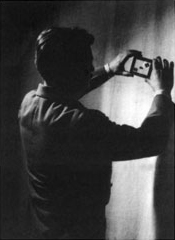


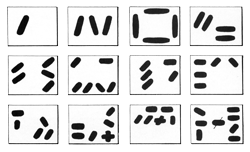

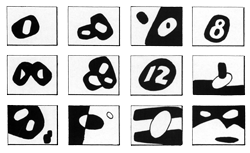

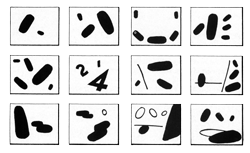

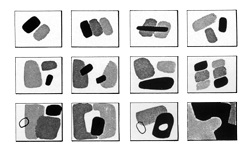
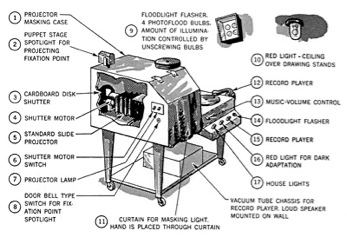
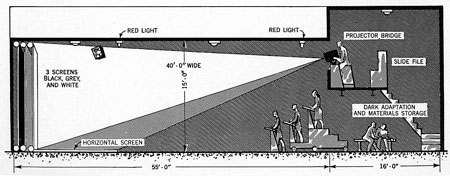
Above Sherman’s diagram from Drawing by Seeing, showing a cross section of the darkened classroom called the “flash lab.” The students’ drawing tables can be seen at bottom, right of center. The projector, from which abstract slide images were shown for only a split second, was suspended on a platform above and behind the students.
Whatever the circumstances, it appears that a method not unlike Sherman’s flash lab was being used in England as early as 1908-12.
According to British art educator Marion Richardson, it was originated by her drawing teacher, Robert Catterson-Smith, the headmaster at the Birmingham School of Art. As noted by Arthur D. Efland in A History of Art Education (NY: Columbia University Teachers College Press, 1990),
“Smith would show lantern slides to his students for a few moments, after which the image would be withdrawn. Richardson [in her autobiography] described the process further: ‘We closed our eyes and, keeping closed, quickly outlined the picture. This “shut-eye” drawing was perhaps Mr. Catterson-Smith’s greatest contribution to art education.’”








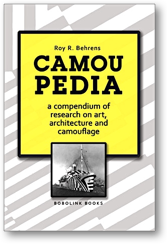

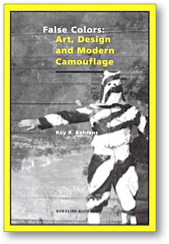

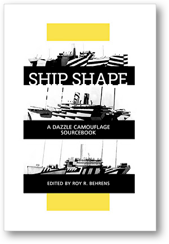




•••